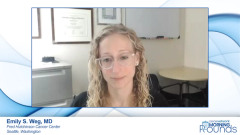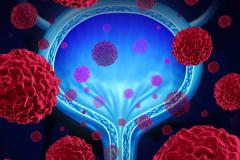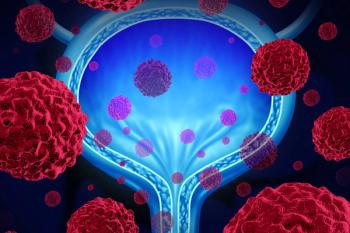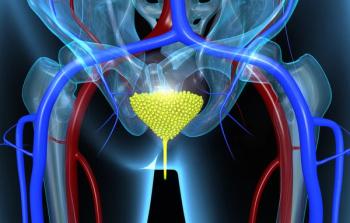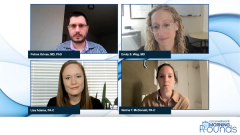
Bladder Cancer: Educating Patients on Treatment Schedules and Adverse Events
Genitourinary cancer experts share insight on best practices in educating patients on treatment schedules and adverse events when receiving therapy for advanced bladder cancer.
Episodes in this series

Transcript:
Petros Grivas, MD, PhD: When we have these patients in clinic, with any systemic therapy, we pay a lot of attention and emphasize the importance of awareness and education about adverse effects. Could you comment on our practice and how we do the teaching? [Is it the] pharmacist, nursing? [What are the] logistics to get the patient on systemic therapy?
Nerina T. McDonald, PA-C: Typically, the medical oncologist will see the patient the day they’re initiating treatment, and we’ll lay out all the expected toxicities that we will see. I usually counsel patients that the most important thing is being aware of your own body. If anything feels off or you’re experiencing something new, call the clinical team. Then we can triage it and work on optimizing management of whatever comes up. We’ll typically go over the logistics—the schedule, when patients can expect to come in for their next dose, when they’re expected to come in for labs and monitoring, and when they’re expected to come in for restaging scans. They will also meet with a clinical nurse coordinator to go over a formal chemotherapy education and counseled on adverse effects, [told about] safety regarding how to manage bodily fluids while they’re on chemotherapy, and provided with all the contact information. If they have an issue over the weekend or at night, where they should call if there’s an emergency or they’re experiencing red flag symptoms.
Petros Grivas, MD, PhD: Fantastic. Great coverage. Nerina, there’s a critical role for advanced practice providers [APPs] and PAs [physician assistants] in that regard. Can you comment on seeing these patients? Most of the time, we have attendings see them at the time of scans. How does this work? [Do you have] any tips regarding that particular pattern of when to see the patient? We see them every time before an infusion.
Nerina T. McDonald, PA-C: I typically see patients every time they come in for a treatment. Occasionally we’ll see them if something comes up that we think is related to treatment and it’s not a treatment day, but they have a rash that needs to be looked at or they’re not feeling well and could potentially be dehydrated. We’ll check a lab panel and then provide supportive care as needed for what the patient is experiencing. Depending on how the patient is doing, if I have a question about tolerability, if they need a dose adjustment, a treatment break, or labs that are borderline for treatment parameters, then that’s something I’d discuss with the oncologist and the clinical pharmacists.
Petros Grivas, MD, PhD: Thank you. That illustrates the importance of the multidisciplinary team and your role as the APP—the clinical nurse coordinator, the pharmacist, and how frequently we communicate with one another. One fear I always have is the patient doesn’t report any adverse effects. It’s important to educate them so they report timely and we can get the patient in right away to our clinic, an urgent care evaluation setting if needed, or any interim between visits. Lisa, [do you have] anything to add to that?
Lisa Adams, PA-C: It takes multiple touchpoints for the education to be reinforced and for the patients to absorb that. Similarly, we do a teaching session on therapy with a clinical pharmacist or nurse. The physician will have gone over those same treatment toxicities and schedule logistics. When they’re seeing APPs either as a chemotherapy-readiness visit or as a post-chemotherapy toxicity check, that’s another touch point to try to pull out what symptoms someone may have had. It’s always hard when patients come in and say, “I had a fever last week, but I didn’t call.” We always say, “Why not? We want you to call. It’s never a bother.” Chemotherapy can be unpredictable and the adverse effects can change very quickly. We encourage all our patients to report symptoms and to be very transparent with the symptoms they’re having.
Petros Grivas, MD, PhD: That’s a key point. Education cannot be overemphasized, and it sometimes needs multiple touching points with a patient to call us between visits. As you and Nerina mentioned, we see them every time before an infusion for history, physical exam, blood work, and a review of the labs. If everything is OK, they go for treatment. We tend to scan them and restate them with imaging after 2 or 3 cycles depending on the regimen. Lisa, is that your practice as well?
Lisa Adams, PA-C: Yes, definitely. Induction chemotherapy is great because it gives you an insight into the disease biology and how things are going to behave. That first scan is a great time to assess where we’re at and what progress we’re making.
Petros Grivas, MD, PhD: Yes,100%. When Nerina and I see patients in clinic, we state them, especially for metastatic disease after 3 cycles of induction chemotherapy. Unless there is a symptom that requires an earlier assessment. Depending on how they do—if they tolerate treatment well, if they have a good response—we may continue. We try to go up to 6 cycles. If they’re struggling with those adjustments with toxicity, we may stop earlier. We may stop at 4 or 5 cycles. We customize. We know we have a patient actively we’re working on, and we have these discussions about the duration of therapy.
Transcript edited for clarity.
Newsletter
Stay up to date on recent advances in the multidisciplinary approach to cancer.


